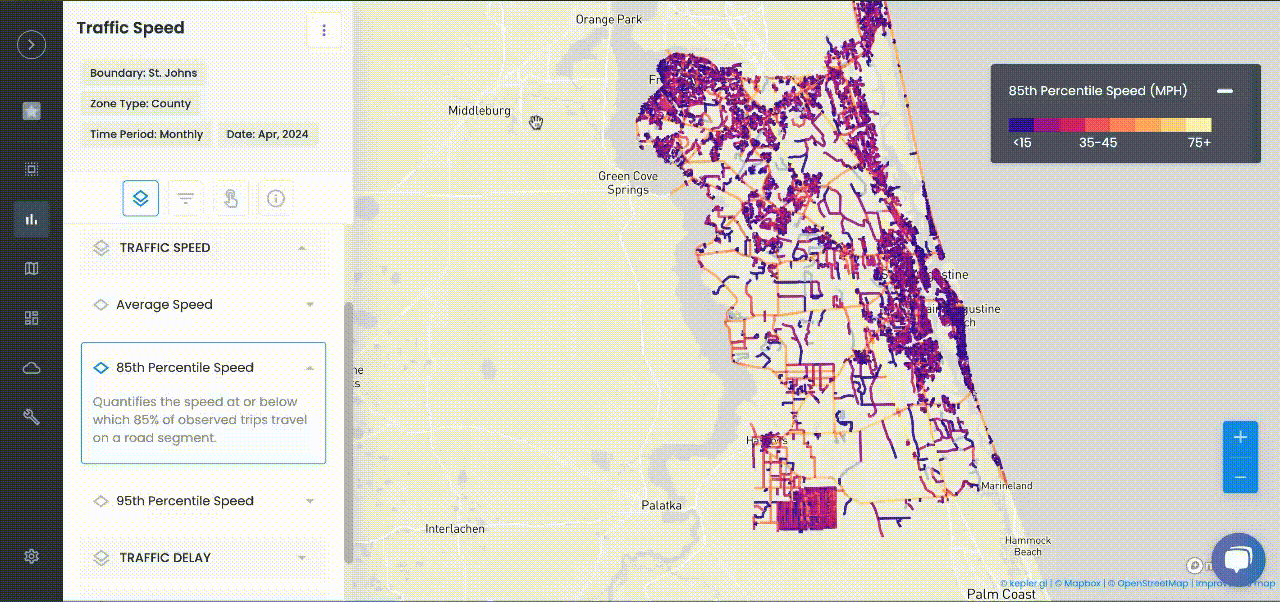
Transportation Planning
The Future of Urban Planning with Digital Twins: Trends for the Next Decade
Digital twins, AI, IoT, and AR/VR will transform urban planning in the next decade, from climate resilience to smarter city design.
Explore how digital twins, AI, IoT, and AR/VR will transform urban planning in the next decade, from climate resilience to smarter city design.
As tech moves forward, digital twins are set to play a huge part in how we plan our cities. Here’s a look at some trends that are shaping what’s ahead:
Key Trends for the Next Decade
- AI and Predictive Analytics:
With AI coming into the mix, planners will be able to test out all kinds of scenarios automatically. They can run loads of simulations like traffic flow or land use changes and AI will help pick out the best paths forward. Smart machine learning models will analyze city data to spot patterns - like figuring out when infrastructure might fail before it actually does. This means cities can tackle issues before they bother us. - Real-Time IoT Integration:
Future cities will be loaded with sensors sending real-time updates to digital twins. Things like traffic, pollution, and weather will be tracked live. With super-fast networks like 5G, these twins can update instantly, making “nowcasts” as common as forecasts. For example, city managers could change traffic lights or manage energy distribution in mere seconds based on what's happening right now. - Edge Computing and 5G Networks:
Next-gen networks will let the twins handle data faster than ever, making real-time controls possible right on your mobile devices. Apps using AR/VR will connect right to the digital twin. - Immersive Visualization (AR/VR):
With AR and VR, planners and citizens can actually “walk” in a virtual version of the future city. Picture using AR glasses to see how a new building would fit in. I can even see citizens attending city council meetings as virtual avatars. This will make planning more engaging for everyone. - Interoperability and Open Standards:
Cities will start breaking down data silos by adopting common standards. When data models are unified, different city systems like transportation and utilities can connect smoothly. For instance, if the energy grid is updated, that shift can automatically reflect in traffic and emissions models. National frameworks might even connect city twins across regions. - Privacy and Data Ethics:
As these twins gather loads of data, keeping personal info secure will be super important. Cities will set up rules to anonymize location data and safeguard communications so they can use the twins responsibly. Clear governance will help gain public trust in the technology. - Collaborative and Participatory Planning:
Digital twins will turn into platforms for teamwork. Citizens, architects, and city departments can all dive into the model via online portals. With tools for crowdsourced data and easy-to-use dashboards, everyone can contribute to planning. Community members could even tinker with neighborhood designs in the twin and see the immediate effects. - Climate Resilience and Sustainability:
Addressing climate change will stay a priority. Future digital twins will incorporate climate models like flood maps and heat simulations right in. Planners can run “climate drills” in the twin to test city strategies against extreme scenarios. - Digital Twin Ecosystems:
Cities will link up with each other and even regions. Neighboring cities might connect their twins to work on shared services like transportation. Some countries may create a national digital twin framework that combines local twins for bigger projects. - Automated Design and Generative Tools:
Digital twins may start recommending the best designs. For example, if a new school is needed, a twin might study population data and suggest the optimal spot and layout. Generative design tools, already part of architecture, will find their way into urban planning. - Regulatory and Governance Changes:
As these powerful digital twins come into play, expect new regulations. Cities and governments will set standards for data quality and how projects based on twins get approved. A big development might need to go through a twin simulation to prove it meets environmental guidelines before moving forward.
These trends suggest our cities will be smarter and more connected. By tapping into advanced features like real-time IoT connectivity, 3D analytics, and AI-driven simulations, city planners can keep ahead of the game. The future of urban planning is digital, and digital twins are at the forefront. Let’s check out some smart city solutions to get ready for this future.

TRAFFIC ENFORCEMENT FEATURES
80% of citizen complaints
are a perception problem
Urban SDK provides precise hourly speed data to evaluate complaints and deploy resources efficiently for the greatest impact to public safety.
Urban SDK provides precise hourly speed data to evaluate complaints and deploy resources efficiently for the greatest impact to public safety.
Target Speeding
Identify hot spots, validate monthly speeding trends and monitor vulnerable areas like school zones.
Improve Safety
Crash and citations location information to compare speed trends month over month
Fast Response
Respond to citizen complaints sooner with address search and exportable reporting
Deploy Assets
Generate maps for traffic enforcement by time of day, location or division to deploy officers to known problem areas.
RESOURCES
Customer Success
See how public sector leaders succeed with Urban SDK.
WEBINAR
Identify speeding and proactively enforce issues
See just how quick and easy it is to identify speeding, address complaints, and deploy officers.







